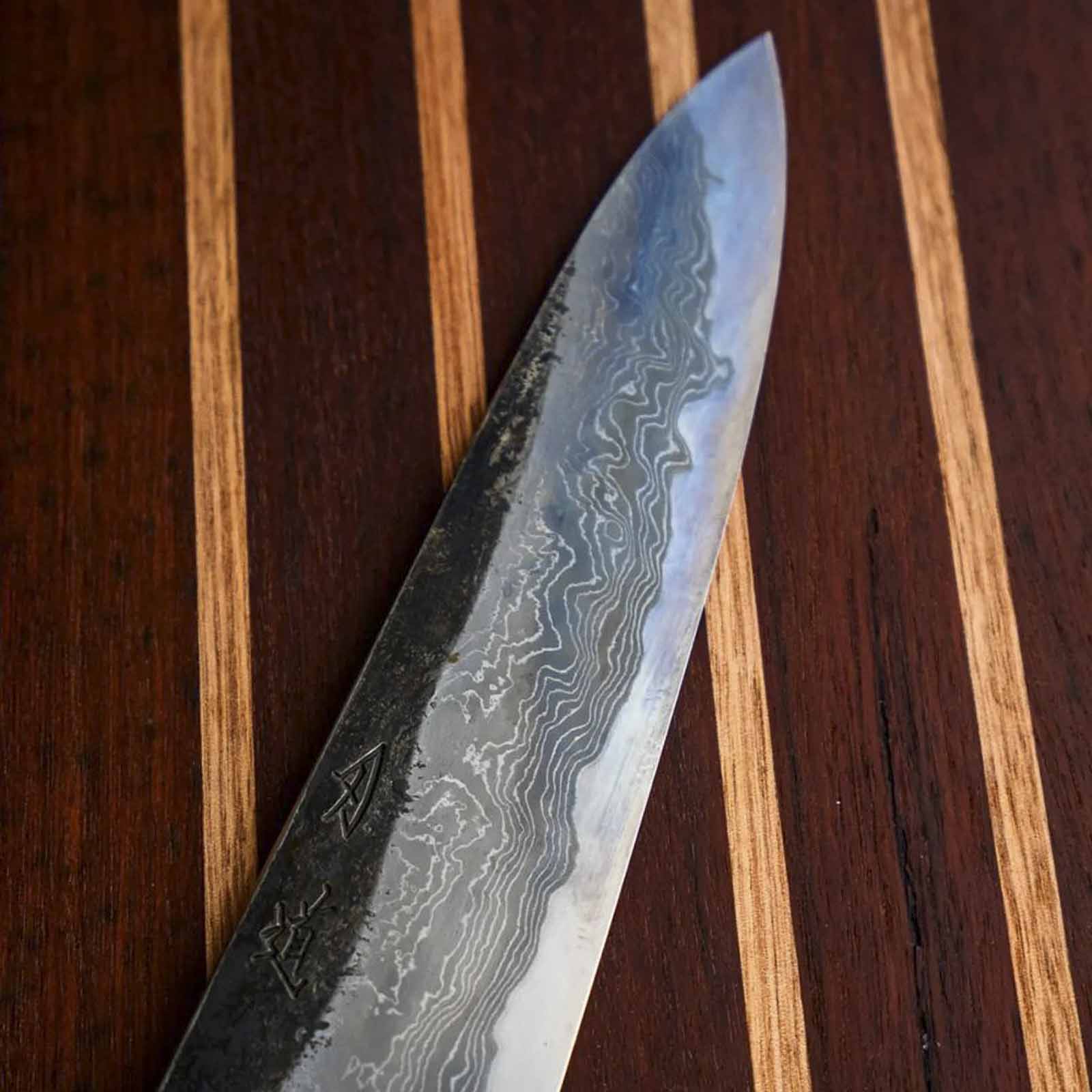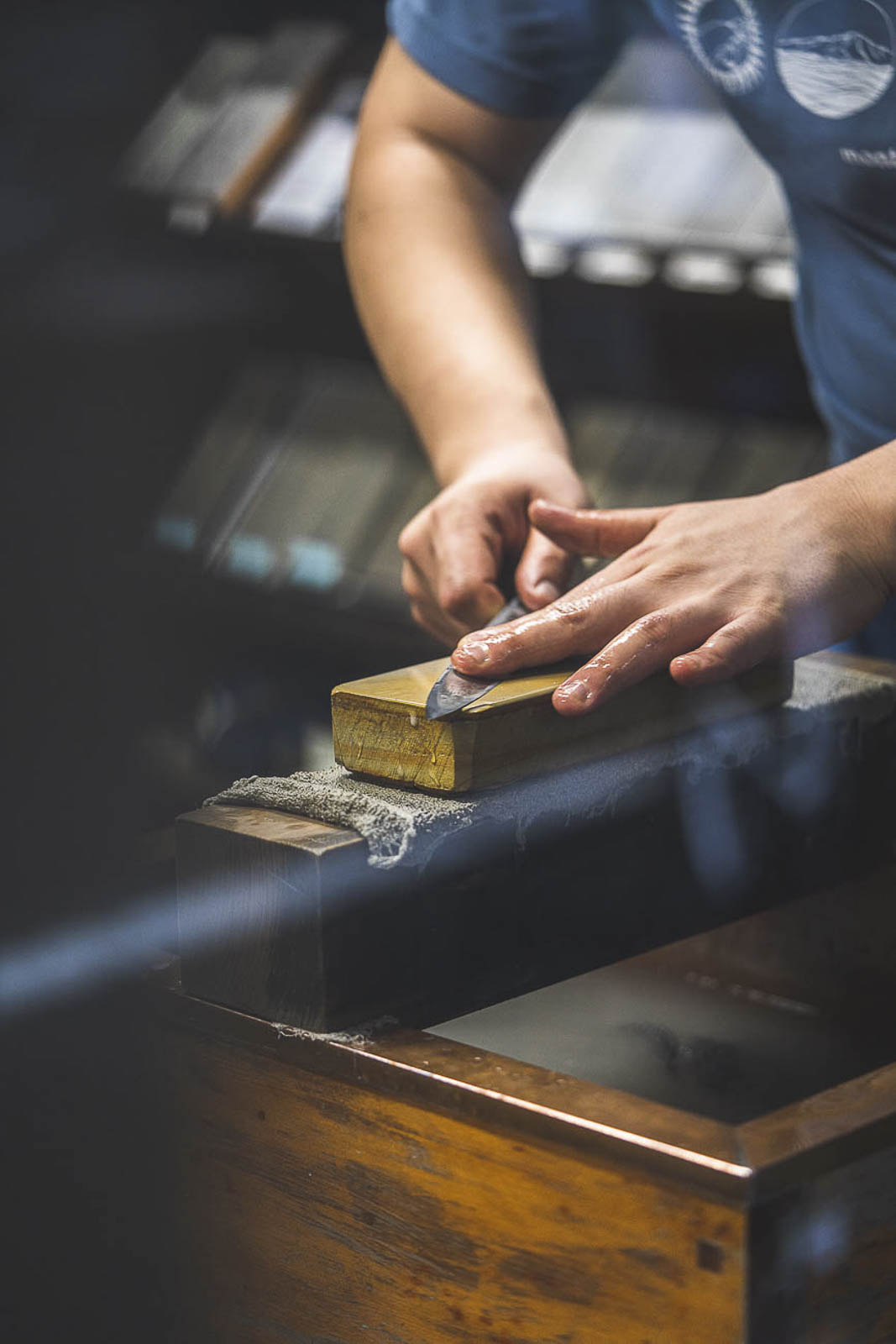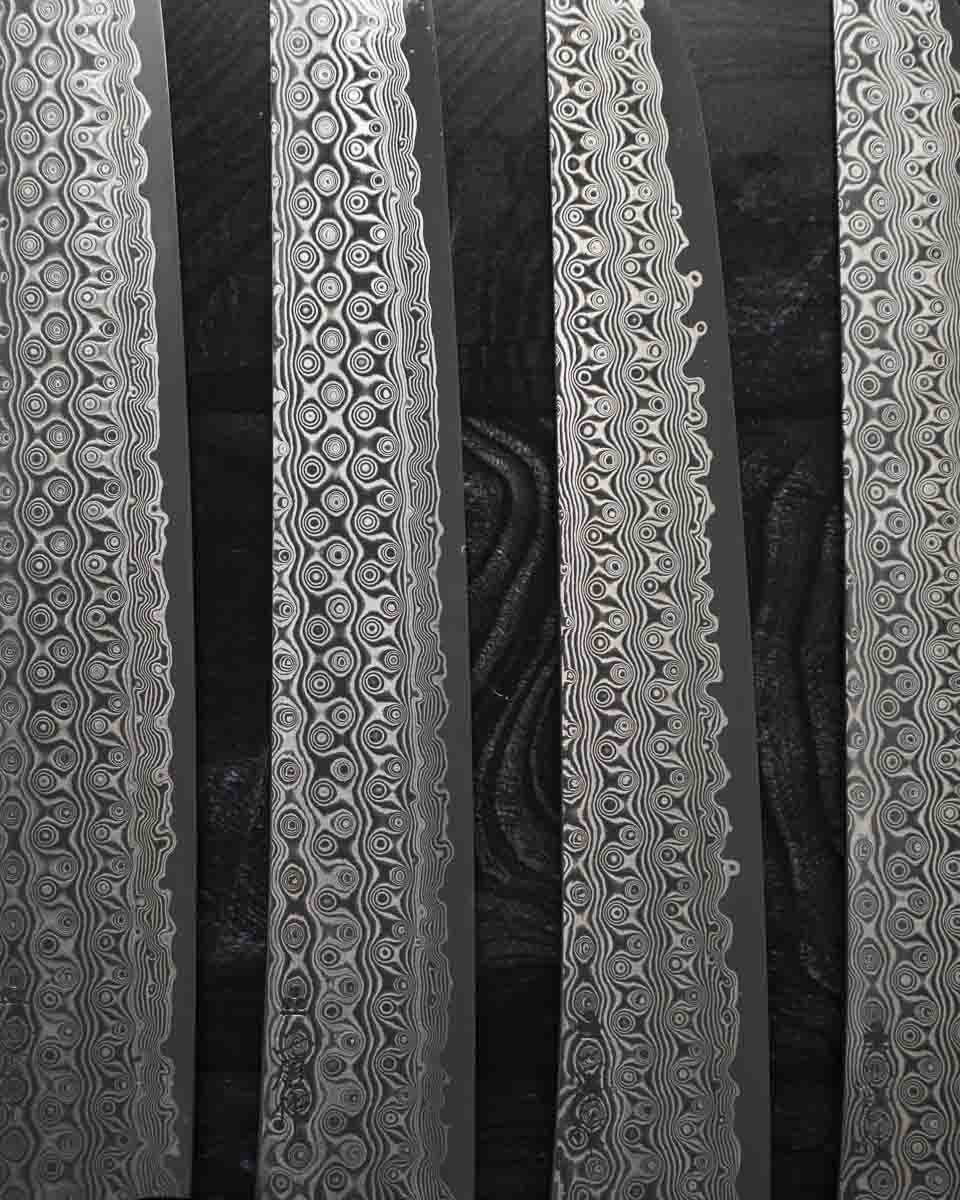It’s the business end of the chef knife, the part that does the real work.
The core steel of your knife, or the cutting edge, is one of the most important aspects in determining how your knife performs. The grind, balance, weight and size of a knife are also important, but often the debate rages on what the best core steel is to use for a knife.
Is ZDP-189 worth the cost? Is VG-10 any good? Carbon vs Stainless?
Each steel, like each knife type, has its own advantages and disadvantages, but a good knife steel is the foundation from which the rest of the knife is constructed.
Generally speaking, you’ll find a Japanese blacksmith will prefer to use a steel type that belongs to one of 3 groups:
Traditional High-Carbon Steels (Non Stainless), like Aogami or Shirogami
Stainless Steels (VG10, AUS10)
Powder Steels (ZDP-189, SG2/R2, Cowry X)
We’ll cover the steels in each of these 3 groups and what makes them different from your regular off the shelves.
Carbon Steel
Japanese blacksmiths prefer to use these traditional knife making steels that lack the stainless elements of their counterparts. Easy to forge to high hardness with good edge retention and excellent sharpness, they are the closest steels to ‘Tamahagane’, the steel ancient samurais used for their swords.
They are, as their name suggests, very high in Carbon (C) content, the element which gives steel its ability to be hardened during the heat treatment process. As steel is hardened it becomes more brittle, a trade-off for it’s long lasting sharpness.
Shirogami/White Paper Steel
White Steel is known for 2 things: steel purity, and incredible, surgical sharpness.
It has very little added elements, except for trace amounts of Sulfur and Phosphorous. It will rust and patina quite easily, so be sure to wipe down immediately after use, and beware when using a Shirogami knife on things like onions or potatoes, as it can leave orange or brown marks on food.
White Steel 1
High hardness, up to 65 HRC.
Carbon: 1.25-1.35%
Manganese 0.20 – 0.30 %
Phosphorus 0.03 %
Sulphur 0.004 %
Silicon 0.10 – 0.20 %
White Steel 2
Moderate hardness, up to 61 HRC.
Carbon 1 – 1.15 %
Manganese 0.20 – 0.30%
Phosphorus 0.03 %
Sulphur 0.004%
Silicon 0.10 – 0.20 %
Aogami/Blue Paper Steel
Probably the most commonly used carbon steel in Japanese chef knives, Aogami or “Blue” paper steel gets its name from the blue paper that Hitachi Metals supplies the steel in.
It comes in 3 variants, Blue 1, Blue 2, and Blue Super, who’s incremental carbon increases result in Blue Super being one of the highest hardness knife steels available when quenched and treated well.
It is a reactive carbon steel, essentially white steel with added chromium, carbon, and tungsten. This results in a knife that does not rust or patina quite as easily as White Steel, and holds an edge for longer.
Blue Steel 1
High hardness, up to 65 HRC.
Carbon: 1.25-1.35%
Chromium: 0.20-0.50%
Manganese 0.20 – 0.30 %
Phosphorus 0.03 %
Sulphur 0.004 %
Silicon 0.10 – 0.20 %
Blue Steel 2
Moderate/High Hardness, up to 63 HRC
Carbon 1.05 – 1.15 %
Chromium 0.20 – 0.50 %
Manganese 0.20 – 0.30 %
Phosphorus 0.03 %
Sulphur 0.004 %
Silicon 0.10 – 0.20 %
Tungsten 1.00 – 1.58 %
Blue Super
High Hardness, up to 65HRC
Carbon: 1.40 – 1.50 %
Chromium 0.30 – 0.50 %
Manganese 0.20 – 0.30 %
Molybdenum 0.30 – 0.52 %
Phosphorus 0.03 %
Sulphur 0.004 %
Silicon 0.10-0.20 %
Tungsten 2.00 – 2.50 %
Vanadium 0.30 – 0.50 %
Stainless Steels
Often not quite as high in carbon content, stainless steels have added chromium which acts as a protecting element to oxidizing agents such as acidic foods and water. Generally speaking, when a steel has 12% or above in Chromium content, it is regarded as a stainless steel.
They can be hardened to about HRC 60, and as such a sharp edge will not last quite as long as their carbon steel counterparts. The main stainless steels used by Japanese blacksmiths are VG-10 and AUS10, and Ginsan.
For their versatile nature and minimal maintenance, stainless steels are very common across many knives manufactured throughout the world.
VG10
Moderate/Low Hardness, up to 60-61 HRC
Carbon: 0.95 – 1.15 %
Chromium: 14.50 – 15.5 %
Cobalt: 1.30 – 1.50 %
Manganese: 0.50 %
Molybdenum: 0.90 – 1.20 %
Phosphorus: 0.03 %
Vanadium: 0.10-0.3 %
AUS10
Moderate/Low Hardness, up to 60HRC
Carbon: 0.95 – 1.10%
Chromium: 13.00 – 14.50%
Molybdenum: 0.10 – 0.31%
Vanadium: 0.10 – 0.27%
Nickel: 0.49%
Manganese: 0.50%
Silicon: 1.00%
Phosphorous: 0.04%
Sulfur: 0.03%
Ginsan
Moderate/High Hardness, up to 63 HRC
Carbon: 0.92 – 1.10 %
Chromium 13.00 – 14.5 %
Manganese (Mn) 0.60 – 1.00 %
Phosphorus (P) 0.03 %
Sulphur (S) 0.02 %
Silicon (Si) 0.35 %
Powder Stainless Steels
This is where the real fun begins! Powder steels are exotic modern alloys that combine the high hardness, high strength properties of carbon steels, with added stainless properties, resulting in superior performance in every way.
Whilst being slightly harder to sharpen and maintain, a cutting edge made from Powder Stainless steel will hold an edge much longer than most other knife steels.
The most common powder steels in japanese knife making are SG2/R2 (Super Gold 2/R2), ZDP189 and HAP40, with ZDP-189 bursting onto the scene in the last decade as being the go-to powder steel of choice for high end chef knives.
You’ll find that a knife with a Powder steel core is more expensive than most others, and for good reason! The steels are expensive and extremely hard to procure, and even then, in the hands of an amateur blacksmith, they are useless. It takes an extremely skilled craftsman to forge and laminate these steels together, resulting in longer build times and requiring nothing short of perfection in the manufacturing process.
SG2/R2
High Hardness, up to 64 HRC
Carbon: 1.25-1.45%
Chromium: 14.00 – 16.00 %
Molybdenum: 2.30 – 3.30%
Vanadium: 1.80 – 2.20 %
Manganese: 0.40%
Silicon: 0.50%
Phosphorous: 0.30%
Sulfur: 0.30%
ZDP189
Extremely High Hardness, up to 67 HRC
Carbon: 3.00%
Chromium: 20.00%
Molybdenum: 1.40%
Tungsten: 0.60%
Vanadium: 0.10%
Manganese: 0.50%
Silicon: 0.40%
HAP40
Extremely High Hardness, up to 68 HRC
Carbon: 1.27 – 1.37%
Chromium: 3.70% – 4.70%
Molybdenum: 4.60 – 5.40%
Tungsten: 5.60 – 6.50%
Vanadium: 2.80 – 3.30%
Cobalt: 7.50 – 8.50%
Final Thoughts
There you have it. Some information on the most common seen steel types in not only Japanes knives but knives around the world. Be sure to choose a steel that matches your lifestyle and ability to maintain!





